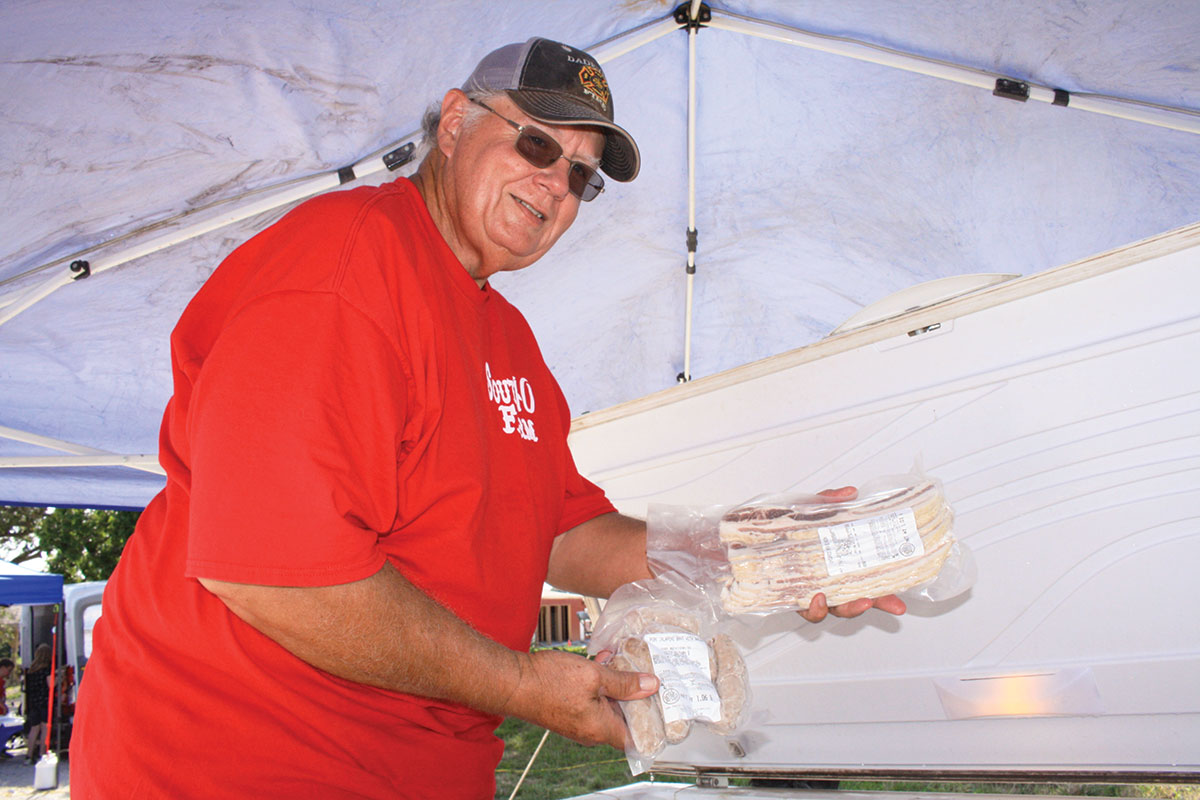
Marketing strategies are as unique as the cattle producers themselves. Some venture into the fray of social media or online sales, while others utilize familiar methods, such as, local sale barns.
Being active in the cattle business does not necessarily mean that one is comfortable with the new technological advances for marketing or has the time to develop online marketing.
For Ronnie Rogers, of rural Southwest Missouri, being a small producer of commercial cattle is more than a hobby, it is a lifestyle. Ronnie is McDonald County, Mo., born and raised; in fact, most of his entire family is within a 15-mile radius of the old family home place between Goodman and Anderson.
As a member of the elite percentage of farmers over the age of 70, Ronnie attributes the help of Darren Rogers, his brother John Rogers and nephew, Kyle Rogers with the success of his herd.
Ronnie grew up caring for the land and raising quality cows the majority of his life. With the exception of being relocated to Vietnam and returning with a Purple Heart, Ronnie has always been an avid cattleman.
He studied at Crowder College, Missouri Southern and the University of Missouri-Columbia, earning his degree in veterinary science and despite several dangerous tussles with the bovine species, he remains their best advocate. However, he prefers to leave the marketing of his 200-plus, herd to the folks at the regional sale barn and stockyards.
“I can take a load of calves in and they add them to a group of others. This gets me the best price,” Ronnie states.
For local small producers, According to Skyler Moore, of Joplin Regional Stockyards, “Auctions always have and always will be, a way to get true price discovery.”
For local small producers, taking advantage of the marketing tools available through a sale barn, saves time and puts their herd in front of buyers from all over the nation. Many sale barns have weekly calf and feeder cattle sales, as well as video sales. Another services available to producers are various special sales that are customized to fit the producer’s needs.
For his part, Ronnie’s first step to a good calf crop is buying good bulls. He averages 10 bulls for his herd of commercial cows that he segregates according to his needs whether stockers, feeder calves or back for breeders. He employs an Intensive Rotational Grazing system with 10 different paddocks, a system that he advocates as the best method for properly caring for the land.
“We don’t own the land; we just take care of it. And if we don’t do a good job of that, cattle will be extinct,” he adds as he looks over the small group of cows.
One service Ronnie takes advantage of is the commingling program at Joplin Regional Stockyards.
Since cattle are the only commodity in the world that is sold by the truckload and brings more in load lots, the commingle program allows several small producers to enter their calves into the program where they are weighed, receive a round of vaccinations and put into uniform groups.
It is the job of stockyard staff to be up to date on market trends and methods best suited to marketing cattle. The average producer may have 30 to 40 cows in their operation; in addition, they may have outside jobs. Choosing the sale barn option just makes sense for today’s busy rural lifestyles.
Another aspect of a local sale barn is the benefit the local economy reaps from cattle sales. According to the University of Missouri Extension in 2009, U.S. livestock receipts accounted for 42 percent ($119 billion) of total farm receipts.
Networking is key to getting the best price for the small producer and this is a natural aspect of the sale barn environment. Remaining on the cutting edge of the cattle industry’s newest marketing tools is a never-ending job as technology continues to improve marketing capabilities for not only the cattle producers but also staff in the stockyard business.
As for Ronnie, it is a win-win situation, he gets the best price for his animals and he does not have to keep up with the technology, leaving time for him to advocate for the beef industry and the future agriculture community to which he is committed.







